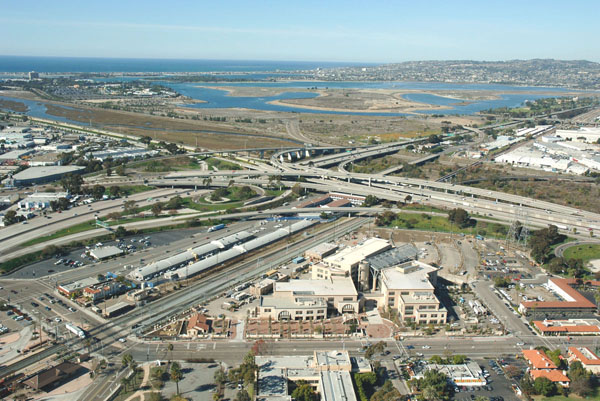SANDAG's Failing Regional Transportation Plan 2015

Press Release: CNFF Opposes the SANDAG Ballot Measure
Read CNFF's Comments on the latest freeway-first transportation plan.
Explore our New Report by Norm Marshall of Smart Mobility highlighting the need for transit investment now and zero justification for freeway expansion.
Check out the list of long-term, unmitigable impacts resulting from this failed plan:
1. Aesthetics and visual resources
2. Agricultural and Forestry Resources
3. Air Quality - (health impacts)
4. Biological Resources
5. Cultural and Paleontological Resources
6. Energy
7. Mineral Resources
8. GHG Emissions - (no climate destabilization = death)
9. Hazards and Hazardous Materials
10. Land Use - (no transit, no infill)
11. Noise and Vibration
12. Population and Housing - (no transit, no infill development)
13. Public Services and Utilities
14. Transportation
15. Water Supply
7.3 SIGNIFICANT IRREVERSIBLE IMPACTS
Implementation of the proposed Plan would result in permanent changes to the existing environments, which have been described throughout this EIR. While the proposed Plan focuses development into existing urban areas and along existing or future transportation corridors, there will still be some conversion of undeveloped land to urbanized uses. These conversions are considered a permanent irreversible change and would occur directly through construction of development on undeveloped land. Land use changes and transportation network improvements would result in significant irreversible impacts to aesthetics and visual resources, including changes to existing community character and views. Future development projects associated with the proposed Plan would result in a direct irreversible loss of sensitive vegetation communities that supports rare, threatened, or endangered species, and impacts to these resources would be significant and irreversible. The development of currently undeveloped land and other land use changes would result in significant irreversible impacts to agricultural resources and forest lands, and the availability of known mineral resources.
The proposed Plan would substantially induce irreversible population growth and increased density, which would displace existing housing units, and result in additional people that would be susceptible to noise impacts. As development occurs at urban edges, additional people and structures would be at risk from wildland fires.
The proposed Plan's regional growth and land use changes would result in the irreversible consumption of nonrenewable resources. This use will have an incremental and irreversible effect on such resources. The irreversible commitment of limited resources is inherent in any development project or, in the case of the proposed Plan, aggregated development projects. Resources anticipated to be irreversibly committed over the timespan of the proposed Plan include, but are not limited to, lumber and other related forest products; sand, gravel, and concrete; petrochemicals; construction materials; steel, copper, lead, and other metals; and water. Development associated with the proposed Plan represents a long-term commitment to the consumption of fossil fuel oil and natural gas. These increased energy demands relate to construction, lighting, heating, and cooling of residences and buildings, and construction and operation of transit systems.
7.4 SIGNIFICANT AND UNAVOIDABLE IMPACTS
Based on the analysis of Chapter 4.0 of this EIR, implementation of the proposed Plan would result in significant and unavoidable impacts for the resource topics shown in Table 7.0-2. As required by CEQA Guidelines Section 15126.1(c), significant and unavoidable impacts listed in this table are described in further detail in Chapter 4.0. Table 7.0-2 identifies significant and unavoidable impacts for each horizon year (2020, 2035, and 2050).
(From SANDAG's 2015 RTP EIR)
Not a "Balanced Plan"
The excuse that we hear at SANDAG meeting after meeting is balance: “BALANCE,” you tell us our solution is a balance between different needs – autos, transit, sprawl, economy, environment. This is misleading and false! 3% transit mode share and 95% autos is not balance. 50% increase in VMT over the next 20 years is not balance, an 8:1 imbalance of freeway infrastructure to transit infrastructure is not balance, and a 200% increase in GHG emissions from the 2050 reduction goals is a climate disaster. On average a local San Diegan travels on transit less than half a mile annually, and in contrast, drives 24 miles a day which is 8,833 miles per year in private vehicles.
This is far from balance, this is deception about the real consequences of the Transportation Plan and this $18 billion tax measure to fund it.
Do you like this page?
